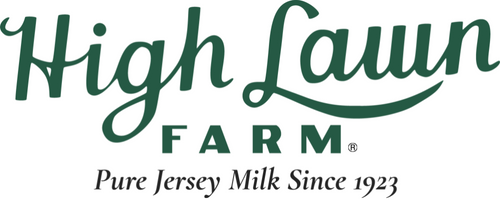The Serious Business of Making Ice Cream, Au Naturel
Rural Intelligence | By Jamie Larson
Good ice cream, really good ice cream, can be a time machine. On a hot summer day, a lick of that perfect scoop, cold and creamy, rich and smooth, stops time, melts away worries, and becomes that one scoop you’ve enjoyed since childhood.
But any time machine is only as good as the sum of its parts, and judging by the pieces falling into place at the historic High Lawn Farm dairy in Lee, their soon-to-launch super premium ice cream line will no doubt satisfy.
“You ask a kid where ice cream comes from, where milk comes from, and they say, ‘the store,’” says High Lawn Business Developer Beth White as she walks to the edge of a fence and calls out to the tan ladies grazing under the shade of a willow tree. “When they come here, they get a totally different understanding and appreciation for what they’re eating.”
“Here” is the unbelievably bucolic rolling Berkshire meadows of High Lawn, 1,500 acres of pastures, woods, and cornfields. Blue mountains crest on the horizon. The farm structures themselves, some dating back to the turn of the 20th Century, are a decorative gray and red alpine style. Rising from the center of the otherwise modest compound (housing only about 200 milk-bearing cows in all) is a massive octagonal clock tower, ripped not from another era or location but, seemingly, from a fairytale. But, of course, farms are built on practicality and hard work, so it’s no surprise that the beautiful tower also once held the dairy’s water supply.
The cows at High Lawn are all Jerseys, bred and raised at the farm to maintain their specific, prize-winning, genetic heritage and milk quality.
White reaches her hand over the fence, singing out sweetly to the approaching cows, which nuzzle against her more like giant dogs than farm animals. Jersey coats go from light tan to rich brown, they have huge doe eyes crowned with long lashes, and their beauty is well matched by their docile and curious dispositions. “They’re so smart,” White says fondly. “There’s something about allowing them to be out here in the fields too, eating the grass, (they’re born outside in the warm weather) that I feel really comes through in our products.” (Because of their smaller size and yield, only seven percent of dairies in the country use Jerseys. While they are smaller, they yield more in proportion to their weight, making them more efficient.) High Lawn believes the unique characteristics of the milk and their farming methods make for superior milk and cream, which they hope will translate into spectacular ice cream.
According to statistics provided by High Lawn, Jersey milk has over 18 percent more protein, 20 percent more calcium and 29 percent more milk fat than common Holstein milk. If that isn’t enough reason to ready oneself for the ice cream in the works, which Farm Manager Roberto Laurens assures me will be of an indulgent quality, High Lawn also has what The New York Times once called “beyond organic” farming methods, using no synthetic growth hormones and no animal byproducts in the cows’ diet.
But they aren’t rushing the ice cream to the freezer section. Laurens says customers should start to see chocolate, vanilla, and local strawberry flavors in stores by next month. But if they need more time to get it just right, they’ll take it. A full list of stores that sell their existing products can be found on the farm’s website and White says that when they have an exact launch date, it’ll be announced there.
Read the full article on Rural Intelligence here.
